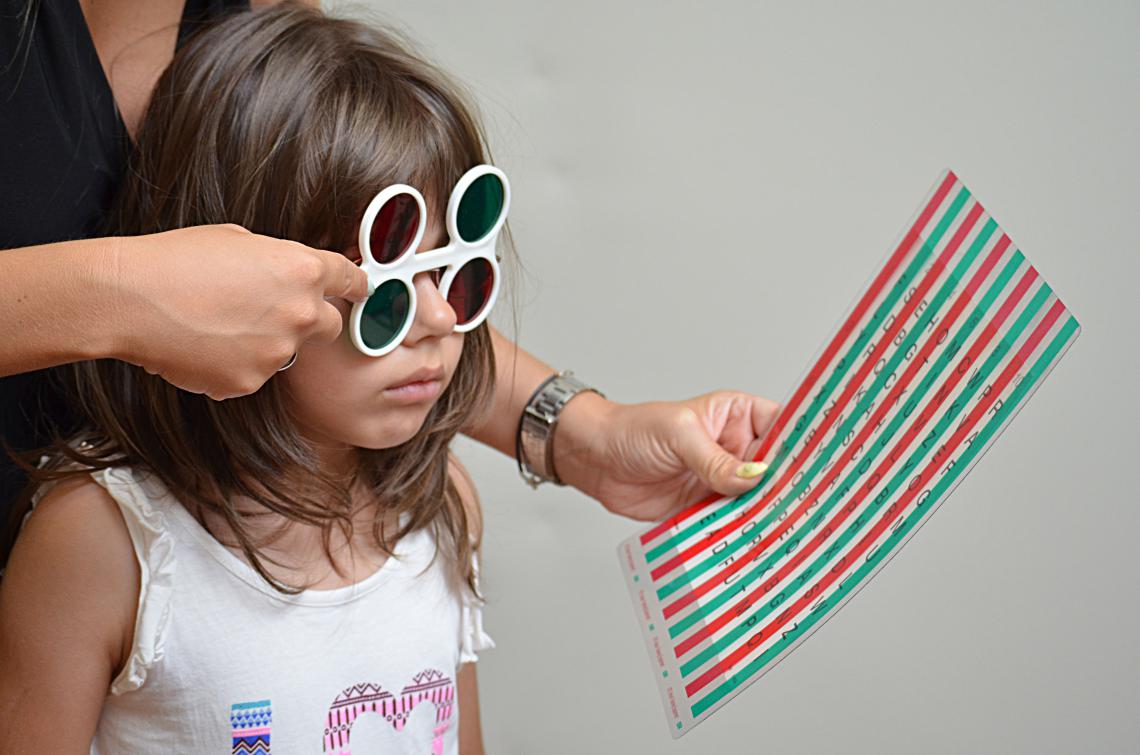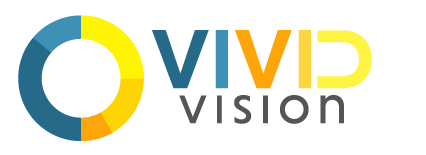What is Vision Therapy?

Optometric Vision Therapy, commonly referred to as Vision Therapy, Visual Therapy, Visual Training, or VT, is a doctor-supervised program designed to improve the function of the visual system.
Optometric Vision Therapy is:
- Conducted under the supervision of an optometrist
- Often administered or guided by a vision therapist employed by the overseeing optometrist
- Supported by ongoing, evidence-based scientific research
- Typically supplemented by the use of lenses, prisms, filters, and 3-D activities, among other things
- Individualized to the unique needs of the patient
- Beneficial to patients of all ages
- Non-invasive and in some cases can be a safe alternative to surgery
One important thing to understand about Vision Therapy is that it is not the same thing as "eye exercises" -- this is a very outdated and over-simplified explanation for what Vision Therapy is and what it does. According to the College of Optometrists in Vision Development (COVD), the goal of Vision Therapy is not to strengthen eye muscles. Your eye muscles are already incredibly strong, and the vision problems Vision Therapy aims to treat are rarely caused by muscle weakness. Instead, vision therapy aims to retrain the learned aspects of vision through the recently-understood concept of neuroplasticity.
Vision Therapy is also not the same as Orthoptics. Orthoptics and vision therapy are two largely separate traditions for assessing and treating visual disorders. They share common features as non-surgical methods of visual rehabilitation, but today, orthoptists practice most often under the care of an ophthalmologist, often a strabismologist, while vision therapy is practiced more often (but not exclusively) in optometry settings.
Orthoptics comes from the Greek words orthos, meaning straight, and optikos, meaning eyes or sight. Orthoptics primarily addresses the oculomotor components of binocular vision in both strabismic and non-strabismic disorders. Vision therapy addresses a wider range of visual deficits and includes rehabilitative therapies that help patients develop or improve a wide variety of visual skills including oculomotor dysfunction, eye coordination disorders, accommodative anomalies, strabismus, and amblyopia. Visual rehabilitation techniques utilized in common by orthoptists and vision therapists are numerous and include patching therapy, oculomotor exercises, anti-suppression therapy, accommodation therapy, and vergence therapy, among others.
Visual skills which can be developed and enhanced through Optometric Vision Therapy include:
- TRACKING The ability to follow a moving object smoothly and accurately with both eyes, such as a ball in flight or moving vehicles in traffic.
- FIXATION The ability to quickly and accurately locate and inspect with both eyes a series of stationary objects, one after another, such as moving from word to word while reading.
- FOCUS CHANGE The ability to look quickly from far to near and vice versa without momentary blur, such as looking from the whiteboard to a book or from the dashboard to cars on the street.
- DEPTH PERCEPTION The ability to judge relative distances of objects and to see and move accurately in three-dimensional space, such as when hitting a ball or parking a car.
- PERIPHERAL VISION The ability to monitor and interpret what is happening around you while you are attending to a specific central visual task; the ability to use visual information perceived from over a large area.
- BINOCULARITY The ability to use both eyes together, smoothly, equally, simultaneously, and accurately.
- MAINTAINING ATTENTION The ability to keep doing any particular activity with ease and without interfering with the performance of other skills.
- NEAR VISION ACUITY The ability to clearly see, inspect, identify, and understand objects at near distances, within arm’s length.
- DISTANCE ACUITY The ability to clearly see, inspect, identify and understand objects at a distance. People with 20/20 distance sight may still have visual problems.
- VISUALIZATION The ability to form and retain mental images in your “mind’s eye." For recall, or manipulate into new mental images.
If an individual’s visual skills are not adequately developed, or a person fails to coordinate vision with other senses, vision problems may occur. Unfortunately, school screenings or visits with the pediatrician, are not comprehensive enough to identify most of these issues. Typically, those screenings are merely looking at the anatomic structure of the eye (checking for disease) and acuity (the ability to see clearly at a certain distance). They may overlook critical problems that are hard to identify if the focus is only on anatomy and acuity. With poor binocularity, for example, one eye may locate an object in one place while the other eye locates it in another. These confusing signals may result in:
- HEADACHES Especially near the eyes or forehead, or occasionally at the back of the head.
- DOUBLE VISION Two objects are seen when only one exists.
- REDUCED PERFORMANCE Losing your place while reading, rereading words or lines, difficulty with understanding or recalling what you’ve read, reading slowly.
- DISCOMFORT, FATIGUE Body tension, stress or pain; weariness at the end of a school or work day.
- SUPPRESSION Information from one eye may be blocked or ignored to avoid seeing double. If the visual problem is not corrected, it may get worse.
Vision therapy, usually combined with appropriate lenses, may remedy, improve, or prevent any of these conditions in both children and adults. Therapy is intended to alleviate the symptoms and eliminate the underlying cause - inadequate visual skills and visual stress. Studies show that success in vision therapy depends on an appropriate program prescribed by your optometrist, and on an individual patient’s co-operation, participation and motivation.
Most Vision Therapy is conducted in-office, in once or twice weekly sessions lasting 30 minutes to 1 hour. There are often "homework" items to supplement in-office work. A therapy program can last from 15 weeks to a year or more depending on the individual’s diagnosis, their age and their commitment and participation level in the program.
Many patients, of all ages, with various diagnoses, from all over the world, have experienced the life-changing impact vision therapy can have.
When to seek Vision Therapy
Although this may appear to be a difficult task, paying close attention when your child is at work, study or play can help you detect the subtle signs of visual discomfort, that can fortunately be treated by a visual therapy program.
The most common tell-tale signs of vision problems that may be affecting your child, specifically, those that could limit his or her ability to read and study, are:
- Abnormally long time taken when doing homework
- Interpreting letters such as ‘b’ as ‘d’ while reading or writing
- Display of poor reading/writing/spelling ability
- Re-reading or skipping of lines when reading
- Short attention spans when doing schoolwork or reading
- Blurriness and headaches
- Display of frustration with schoolwork
- Abnormal mood swings
The most responsible decision you can make as a parent is to seek an early developmental optometric diagnosis as soon as your child displays one or more of these signs. After a thorough evaluation of such symptoms, a qualified developmental optometrist will be in a position to confirm whether or not the particular signs your child displays may need vision therapy.
Remember, good vision is critically important for your child’s success in life. As a responsible parent, YOU have an equally important role to play and make that happen.
References
https://visiontherapyblog.com/what-are-the-signs-that-my-child-may-need-vision-therapy/
